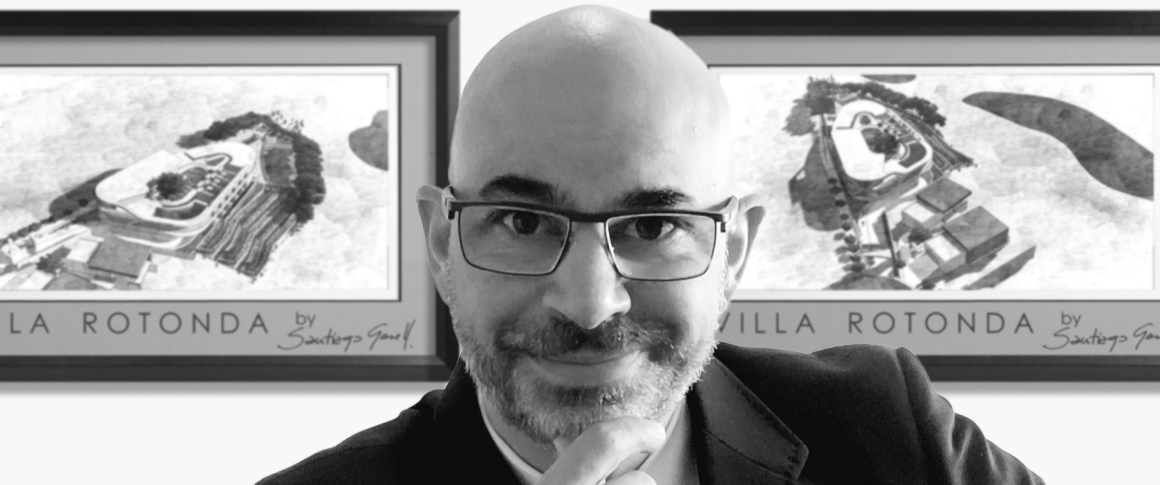This article was originally published in the July 2020 edition of the Nevada State Board of Architecture, Interior Design and Residential Design’s Focus newsletter.
Santiago Gesell’s path to becoming a licensed architect was not what you would consider a “traditional” path. It began in Argentina and finally concluded in June 2020 in Las Vegas.
Gesell's passion to become an American architect is deeply rooted in his family history. His father was born in 1922 in Minneapolis, where his grandfather was developing the idea of a house that would store ice blocks in its basement during winter to provide cool, natural ventilation in summer. Four years later, the family migrated to Argentina to run the trading business of Gesell's great-grandfather—the German economist Silvio Gesell—whose monetary theory was chosen by Frank Lloyd Wright as the currency system to implement on his urban utopia Broadacres City. Upon Silvio's passing, Santiago Gesell's grandfather invested part of his inheritance to purchase six square miles of bare dunes by the Atlantic Ocean, which he afforested and developed into the coastal town Villa Gesell, where Gesell was born.
The achievements of his family, along with the artistic influence of his mother and the scientific influence of his neurosurgeon father, made Gesell pursue his architectural studies at the University of Buenos Aires. After earning his degree, he got experience in hospitality remodeling, so when the time came to migrate to the United States, Las Vegas was a perfect fit.
Before moving to Las Vegas, Gesell researched the profession of architecture in the United States. He learned about the National Architectural Accrediting Board (NAAB), NCARB, the American Institute of Architects (AIA), and what would be necessary to become licensed in the United States.
Gesell started out in the United States as a student, earning an associate’s degree in construction management from the College of Southern Nevada (CSN). While he still wanted to become a licensed architect in the United States, it seemed like a faraway dream. At that time, Nevada, like many other states, required applicants to complete the Intern Development Program, or IDP (now the Architectural Experience Program®, or AXP®) before they could begin taking the Architect Registration Examination® (ARE®). To earn IDP credit, Gesell needed a green card so he could be employed by an architecture firm. After completing his degree at CSN, Gesell was offered a position in a construction company where he also earned a general contracting license and worked in design-build.
Then, in 2014, Nevada changed the rules, allowing applicants to complete the IDP and ARE concurrently. This was the incentive Gesell needed—his path to licensure had just gotten a lot shorter. He submitted his education to NAAB for evaluation and was approved. Then he opened his NCARB Record and began recording his work experience and studying for the ARE.
Like so many applicants, the journey to earning experience credits and passing the exam was not quick and easy. Because Gesell worked for a construction firm, he couldn’t complete all the IDP requirements there; he had to find opportunities to work under the responsible control of an architect. Despite the challenges, Gesell said the experience program is very useful because it helps candidates learn how to run and market an architecture firm—skills you don’t often learn while getting an education.
While working on his experience requirement, Gesell began to study for the ARE. Gesell started testing under ARE 4.0 and eventually took advantage of the transition to ARE 5.0—by testing strategically, he was able to drop the number of divisions from seven to five. Gesell said his biggest challenge with the exam was understanding exactly what the question was asking and completing the exam in the allotted time.
Gesell completed his experience credits, and in less than three years, passed all sections of the ARE. On June 10, 2020, he was sworn in as a Nevada-licensed architect. Although Nevada typically holds an in-person celebration for newly licensed architects, the COVID-19 pandemic meant that Gesell’s swearing in was conducted virtually. Still, the virtual meeting gave Gesell’s distant family and friends the opportunity to call in to celebrate his licensure. Gesell said he feels proud and optimistic about having gotten his license during the pandemic: "Maybe it's a sign. Maybe, during all these challenging times of change, architects can proactively take the lead of development and construction, boosting sustainability, while creating an unprecedented demand for our work. Nothing like an architect's heart to understand the need for a sustainable future, both for the environment and our beloved profession."
Stacey Hatfield is the public information officer for the Nevada State Board of Architecture, Interior Design and Residential Design.
